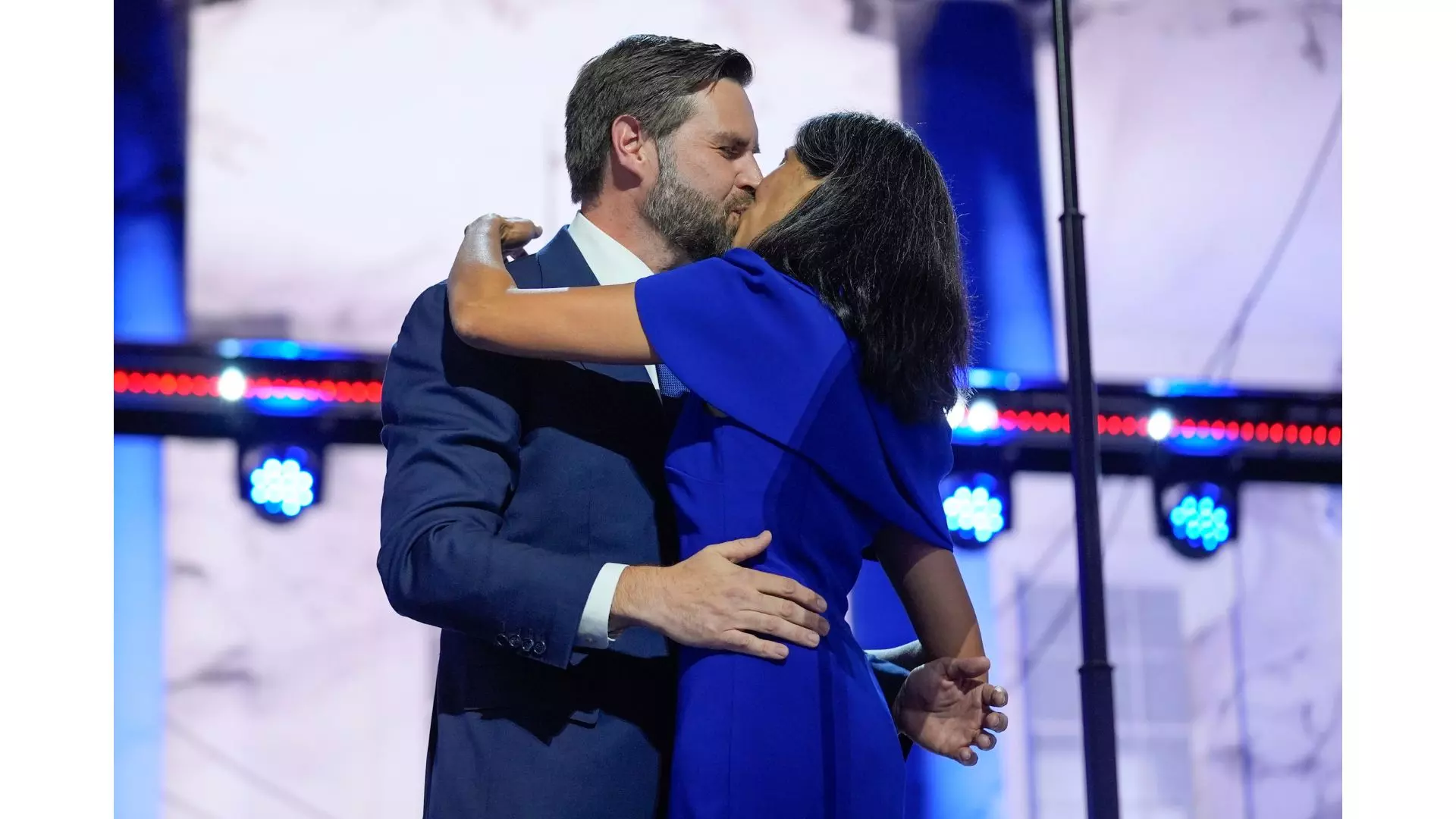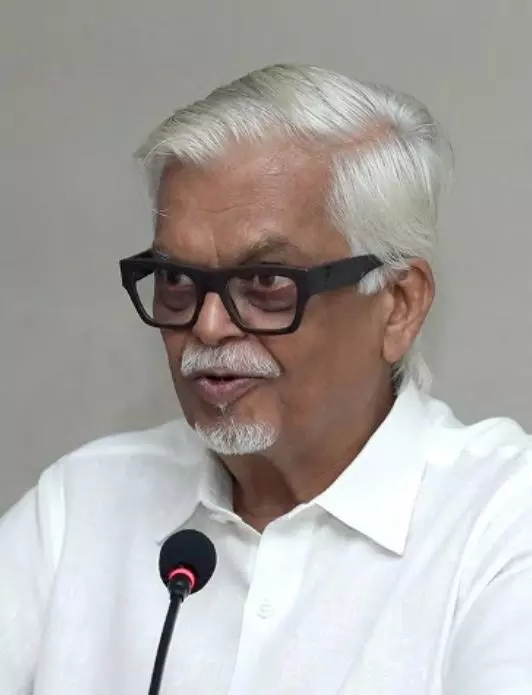Sanjaya Baru | A Telugu in US knocks at White House’s door
Tracing the journey of Telugus in America from pioneering cinema to significant political influence, highlighting cultural ties and community growth

At a time when Bollywood movies were still showing actors cavorting and singing on the streets of Switzerland and spending an Evening in Paris, Telugu cinema had an America Abbayi crossing the Atlantic. The doyen of Telugu cinema, D. Madhusudan Rao, who in the 1970s pioneered the shift of the industry from Chennai to Hyderabad, produced America Abbayi (American Boy), the tale of a Telugu boy in the United States. The characters in the movie were not going overseas to dance and shop, like they do in so many Hindi movies, but just to live their normal professional life. The plot is not, in any case, the point. What is interesting about the movie was that it was filmed on locations across “Middle America”, not the big cities along the two coasts but in places like Chicago, and in Michigan, Illinois and Ohio -- and one of the principal characters was a medical doctor. The movie showed how normal the social connect between the Telugus and Middle America had become by then.
The first wave of Indian professionals migrating to the United States after the US Congress liberalised immigration policy in 1965, allowing Indian medical doctors and engineers to secure employment in the United States, comprised a large number of Telugus. Guntur Medical College very quickly became home to a large number of doctors migrating to the US. Not surprisingly, therefore, producer Madhusudan Rao and director Singeetam Srinivas Rao, known for their many box office hits, made a doctor the mother of America Abbayi.
The Telugus in America have come a long way. A Telugu “ammayi” (girl) is knocking on the doors of the White House. If Donald Trump wins his second term in November this year, and if he does not change the US Constitution to enable him to seek a third term, then his vice-president, J.D. Vance will, in all probability, get a shot at becoming the President of the United States in 2028. Usha Chilukuri will then be the first Indian- American, and Telugu, First Lady.
Usha’s father studied at IIT Madras and her paternal grandfather, C. Rama Sastry, was a member of IIT Madras’ “founder faculty”. Usha Chilukuri was born and raised in the United States but has relatives, including a 96-year-old grand-aunt, living in Andhra Pradesh. While Gujaratis and Punjabis dominated the early post-Independence Indian migration to the US, the Telugus rapidly caught up. After the first wave of the 1960s, the second wave came in the 1990s, thanks to the Y2K boom. Over the past two decades, there has been a virtual stampede of US-bound Telugus.
According to US Census Bureau data, the Telugu-speaking population in America has rapidly increased from 320,000 in 2016 to 1.23 million in 2024. It has been reported that at last count California state was home to the largest Telugu-speaking community of over 200,000, with Texas (150,000) and New Jersey (110,000) at second and third places. Illinois, mainly Chicago, is home to 83,000 Telugus followed by Virginia (78,000) and Georgia (52,000). Telugu is the 11th most spoken language in a country that reports 350 spoken languages.
An awareness of this dynamic and trend prompted the Manmohan Singh government to allow the United States to open a consulate in Hyderabad, then capital of the erstwhile united state of Andhra Pradesh. Consular data showed that the largest number of visas being issued in southern India went to Telugus, who had to apply through the Chennai consulate. Thanks to the support received from chief minister Y.S. Rajasekhara Reddy both the Prime Minister’s Office and the ministry of external
affairs were able to prevail on the home ministry to permit the location of the US consulate in Hyderabad rather than Bengaluru. The file work was done in time for President George W. Bush to make the official announcement during his visit to Hyderabad in 2006. The Hyderabad consulate has reportedly become one of the biggest US consulates in Asia.
While the bifurcation of the state has led to the creation of separate associations of American Telugus from Andhra Pradesh and Telangana, the original Telugu Association of North America (TANA) remains one of the oldest such associations of Indian-Americans in the US. Founded in 1977, TANA has long hosted celebrities from the region visiting the US and now boasts of a wide range of cultural and welfare activities both in the US and in India. Quite apart from their numbers, Telugus have also made a mark in American life. From computer scientists like Rajagopal “Raj” Reddy, of Carnegie Mellon and winner of the Turing Award, to business gurus like C.K. Prahalad and corporate leaders like Satya Nadella of Microsoft, Telugus have also made a mark on the American academic and corporate arenas. While Usha Chilukuri acquires her present high-profile status as the wife of a famous politician, she also represents the large and growing community of high-achieving Telugus in the US.
The India-US bilateral relationship is, therefore, being increasingly defined by the weight of the Indian diaspora in American academic, economic, political and cultural life. However, it would be wrong for anyone to assume that stronger people-to-people connect can in itself alter state-to-state relations. The former can certainly help both as a ballast to the relationship and as a counterweight to political and business lobbies that may have other priorities. But sometimes it can also contribute to tricky political situations. We see that in the case of the United States, where the political activism of various Indian-American and non-resident Indian groups has been both a source of support and of problems in the bilateral relationship.
The most recent example is that of the political activism of pro-Khalistan groups. The Indian attempt to deal with this problem has contributed to a seriously tricky situation and we have not heard the last word on the matter. Less explosive but equally controversial have been the political activism of an assortment of Indian-American groups ranging from activists among Dalits, Hindutva groups, left-wing outfits and civil liberties advocates. The growing numbers and rising profile of Indian Americans is cutting both ways. They help build the relationship between the United States and India but are also testing the limits.
